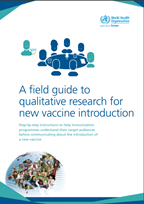News
All →Publications
This document provides evidence-based answers to frequently asked questions related to human papillomavirus (HPV), HPV vaccines, and prevention...
European Immunization Agenda 2030
The European Immunization Agenda 2030 (EIA2030) is a vision and strategy, designed and crafted by the Member States, for achieving the full...
European Immunization Agenda 2030: draft for the Seventy-first Regional Committee for Europe
This Draft document is prepared for the Seventy-first Regional Committee for Europe. The European Immunization Agenda 2030 (EIA2030), a vision and strategy...
Questions and answers about human papillomavirus (HPV)
Human papillomavirus (HPV) is a virus that infects the skin or various mucous membranes. There are over 200 types of HPV. Some HPV types, known...
A field guide to qualitative research for new vaccine introduction: step-by-step instructions to help...
Expanding a national routine immunization schedule to include a new vaccine is a positive step forward in reducing a country’s burden of disease....
New vaccine introduction: checklist for planning communication and advocacy: World Health Organization...
Vaccine-safety-related events, and how we respond to them, can affect public trust in vaccines and health authorities. These events may or may not...
Documents

Field guide to qualitative research for new vaccine introduction
Expanding a national routine immunization schedule to include a new vaccine is a positive step forward in reducing a country’s burden of disease....









